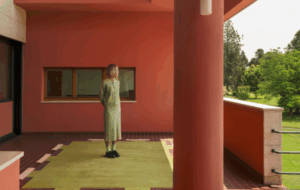 Walter Segal’s 1970s vision for self-build housing is still deeply relevant||
Walter Segal’s 1970s vision for self-build housing is still deeply relevant||
The capital’s housing shortage is one of its most pressing problems, but, hamstrung by governance and with a lack of ideas, we do not appear to be solving it. Time for some radical thinking, inspired by events at home and abroad
We hear a lot about the housing crisis these days – a crisis, incidentally, that has been going on for a couple of decades – and about London’s massive population growth, which requires around 50,000 new homes to be built each year if we are to satisfactorily house the new born and the incomers. But we are building less than half the number we need and there is little chance, using current processes, that we will.
This is not just a shortage in numbers; it reflects a dearth of ideas both in the politics of housing and in the ideas behind design and delivery. We seem to be so constrained by finance, regulation, targets, standards and the paraphernalia of governance that we are unable to think outside of the box.
I was interested to read Justin McGuirk‘s new book, Radical Cities: across Latin America in Search of a New Architecture. He looks at the informal housing of the favelas of Brazil, the barriadas of Peru and the Torre David in Venezuela’s capital Caracas, where squatters took over an empty office building and recrafted it to create a living and working environment. In the book he namechecks the British architect and planner John Turner, whose work in the barriadas was extensively published in Architectural Design magazine in the 1960s and whose book Freedom to Build charted the energy of communities creating their own housing. It may be a step too far to suggest that we deregulate housing totally and permit squatter developments to pop up on all that spare land that’s lying around in London right now (quite a lot of it with planning permission for housing), but we can learn lessons from the chronicles of Turner and the work of other architects in the 60s.
Look for instance at 125 Park Road, close to Regent’s Park. The block was one of the first funded and built on the co-ownership principle made possible by the formation of the Housing Corporation in 1964. It was designed by Farrell/Grimshaw Partnership for the Mercury Housing Society, of which Terry Farrell and Nick Grimshaw were members. They both lived in the block, creating for themselves spectacular penthouse apartments. One of the most interesting aspects of the design is its central core and non-loadbearing internal walls. This allows occupants to adapt their living accommodation to suit their lifestyle, and even to merge with adjacent flats if they need more space, proving a flexibility and long life to the development denied to most that are constructed today.
A little after Farrell and Grimshaw were building Park Road, Walter Segal was designing a self-build system for Lewisham Council. The great anarchist writer Colin Ward was then working as an architect for the borough and brought Segal in to design a group of homes that could be built on land topographically too difficult for the local authority. Today, the houses remain a testament to a different way of doing things.
There is a pressing need for us to do things differently now, because the current set of ideas sure ain’t working. Perhaps for his next book, McGuirk should look for some lessons closer to home.






















